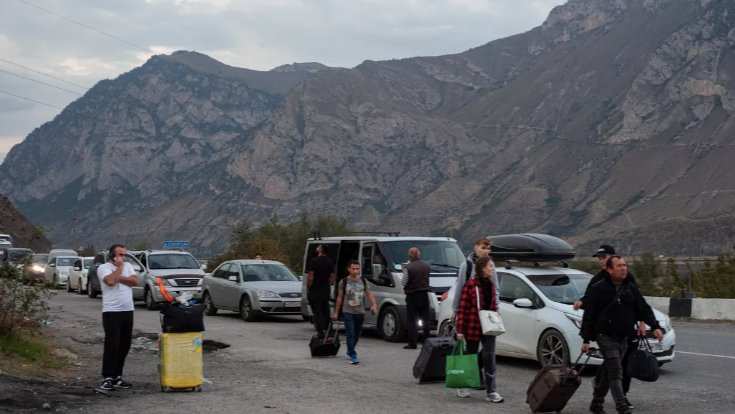After Vladimir Putin declared a partial mobilisation on 21 September, at least a quarter of Russian automobile border checkpoints have reported a rise in traffic. Over just nine days, at least 117,000 passenger cars left Russia through those checkpoints. Our data analysis shows how Russians are fleeing mobilisation to avoid getting killed in the war.
According to the Russia’s Federal Customs Service, since 21 September, exit traffic has risen at 29 out of 87 border checkpoints (this number does not account for Kazakhstan and Belarus: the customs service does not publish any data on these countries). In total, there are 109 automobile border checkpoints in Russia.
At some of the smaller border checkpoints, exit traffic has grown significantly. Traffic jams stretching for many kilometres have appeared near the borders. At Verkhny Lars, a border checkpoint between Russia and Georgia, travellers had to bribe people to cross the checkpoint or to move along in the traffic jam. Some people sold spots in the queue, while some even left their cars behind to cross the border on foot. On the border with Kazakhstan, the Russians set up camp right in the steppe surrounding the highway.
Back on 25 September, sources of Novaya Gazeta. Europe estimated that up to 260,000 men had left Russia fleeing the mobilisation.
Thousands of men queueing up at the Mashtakovo border checkpoint in the Samara region
Finland and Norway
In total, 25,400 passenger cars have entered Finland since 21 September. This is 1.4 times higher than the number of people that crossed the border over the same period before the mobilisation order. The most significant rise in traffic (30-75%) was recorded on the border checkpoints of Svetogorsk, Brusnichnoye, and Torfyanovka in the St. Petersburg region. The Russian ambassador to Helsinki reported that about 60,000 Russians had entered Finland since 21 September.
The busiest border checkpoints on the border with Finland 🇫🇮
The number of cars that crossed the border and that were queueing up near the checkpoint from 1 Sept until 29 Sept
Finland was one of the two countries (along with Norway) that still allowed entry to Russians with a Schengen visa through land checkpoints after 21 September. However, the country later announced that it would close the border for the majority of Russians starting from 30 September.
The automobile traffic from Russia to Norway has also risen considerably (by 57%) since the mobilisation order. However, due to the remote location of the border checkpoints, not that many cars have crossed the border: a little over 500 in total.
The busiest border checkpoints on the border with Norway 🇳🇴
The number of cars that crossed the border and that were queueing up near the checkpoint from 1 Sept until 29 Sept
Latvia and the Baltic states
Two days before Putin’s mobilisation order, the Baltic states had banned entry to Russians with short-term Schengen visas, as if predicting what would happen next. Nevertheless, the car traffic on the border checkpoints has still risen considerably. By 29 September, there were 210–300 cars queueing up in front of the Ludonka, Ubylinka and Burachki checkpoints.
Ukrainians, not Russians, are the ones choosing these border checkpoints, local media report. “People are afraid of becoming Russian citizens and losing the right to exit the country. Besides, they are at risk of being mobilised into the Russian army,” residents of Pechory, a town in Russia’s Pskov region, told Postimees news outlet.
The busiest border checkpoints on the border with Latvia 🇱🇻
The number of cars that crossed the border and that were queueing up near the checkpoint from 1 Sept until 29 Sept
Since the start of the mobilisation in Russia, 1,600 cars have entered Latvia. Meanwhile, a total of 9,300 cars have entered the Baltic states and Poland combined.
Georgia
A humanitarian collapse was reported near the Verkhny Lars checkpoint on the Russian-Georgian border just a few days after the mobilisation order. Verkhny Lars is essentially the only way out of Russia through the Caucasus region: land borders with Azerbaijan are closed due to COVID, and it is impossible to reach the neighbouring states through Russia-controlled Abkhazia and South Ossetia.
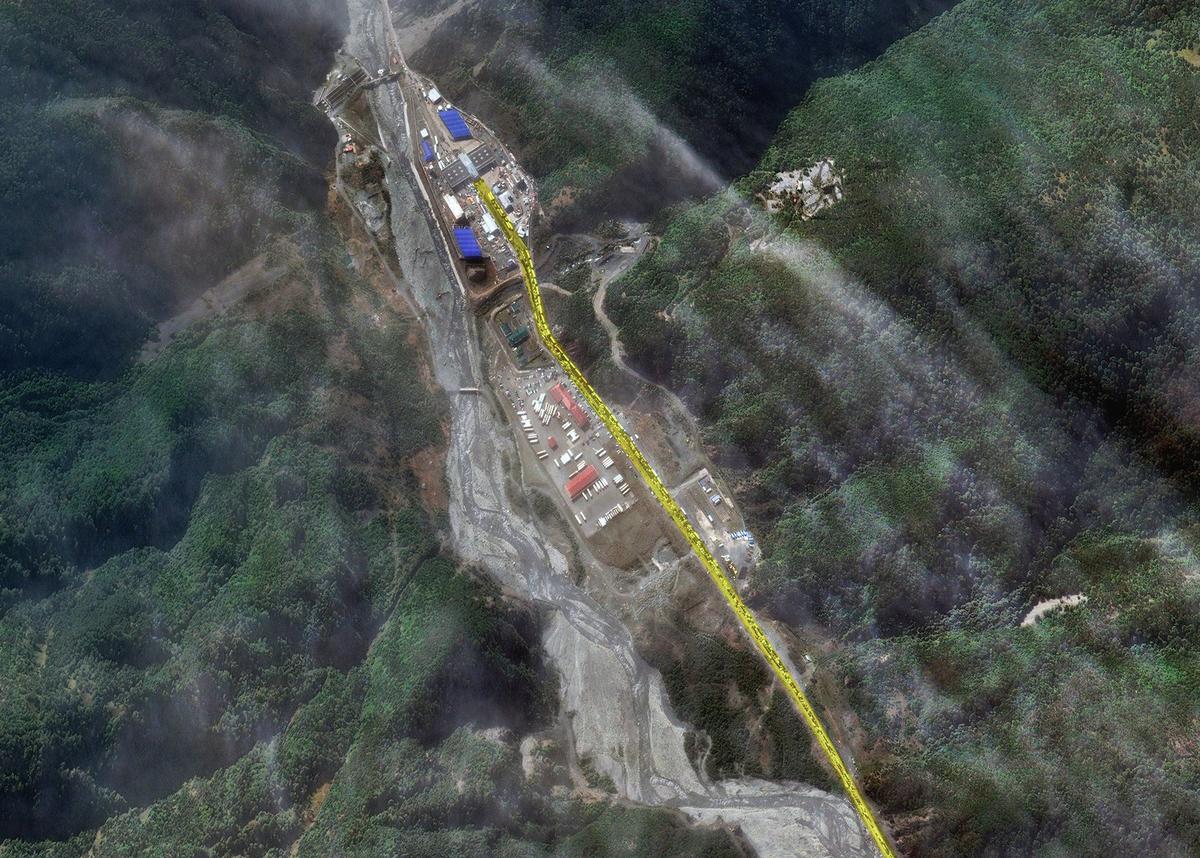
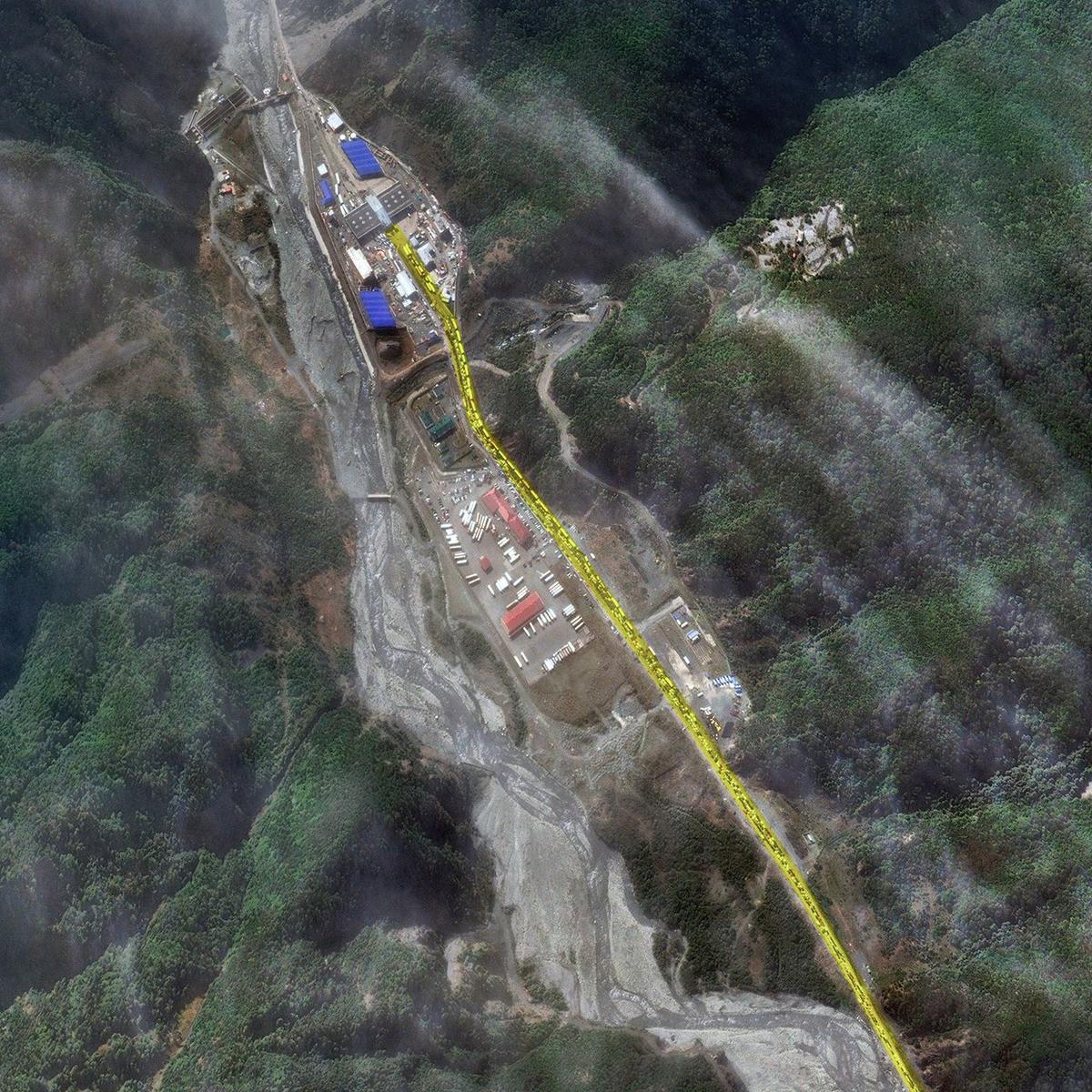
A traffic jam near the Verkhny Lars border checkpoint.
Source: Maxar
However, what’s worth noting is that since the start of the mobilisation, the automobile traffic near Verkhny Lars has barely gone up. Before 21 September, an average of 1,470 cars a day crossed the Russian-Georgian border. After the mobilisation order, the number went up just by 30 to reach 1,500 cars. The traffic jam may be due to the major increase of people crossing the border on scooters and bikes. For several days, from 26 to 29 September, border officials even allowed people to cross the border on foot.
The busiest border checkpoints on the border with Georgia 🇬🇪
The number of cars that crossed the border and that were queueing up near the checkpoint from 1 Sept until 29 Sept
What is more, after the 25 September peak, when 1,890 cars had left Russia, the border officials drastically lowered their throughput capacity. On 27 September, the number of cars leaving Russia halved, reaching just 936 in a day. On 28 September, only 789 cars entered Georgia.
Since 21 September, a total of 13,500 cars have crossed the Russian-Georgian border. As of the morning of 30 September, there were still 2,000 cars queuing up on the border.
Kazakhstan
The Federal Customs Service does not publish the border crossing data on Russia’s borders with Kazakhstan and Belarus. These countries form part of the Customs Union, which means that there is no customs control on the border.
Nevertheless, according to Kazakhstan, approximately 98,000 Russians entered the country just over six days — from 21 to 26 September. Eyewitness accounts suggest that there are thousands more people still queueing up at the border.
A traffic jam near the Karaozek checkpoint in Russia’s Astrakhan region on 25 September
Kilometres-long traffic jams have been recorded near the checkpoints of Mashtakovo, Karaozek, Sagarchin, and Ozinki. The head of the Krasnoyarsk district of Russia’s Astrakhan region, where the Karaozek checkpoint is located, has already introduced a state of high alert. Local officials restricted traffic for foreign vehicles and vehicles from other regions on the way to the border.
There are a total of 30 automobile checkpoints on the border between Russia and Kazakhstan. Here is a map of all of them.
Mongolia
Residents of Russia’s Buryatia, Tuva, and the Zabaykalsky region are fleeing mobilisation to Mongolia. After 21 September, a rise in traffic has been recorded even at border checkpoints in far-off locations, such as Shara-Sur in Tuva, which used to admit just one car every four days before the mobilisation order.
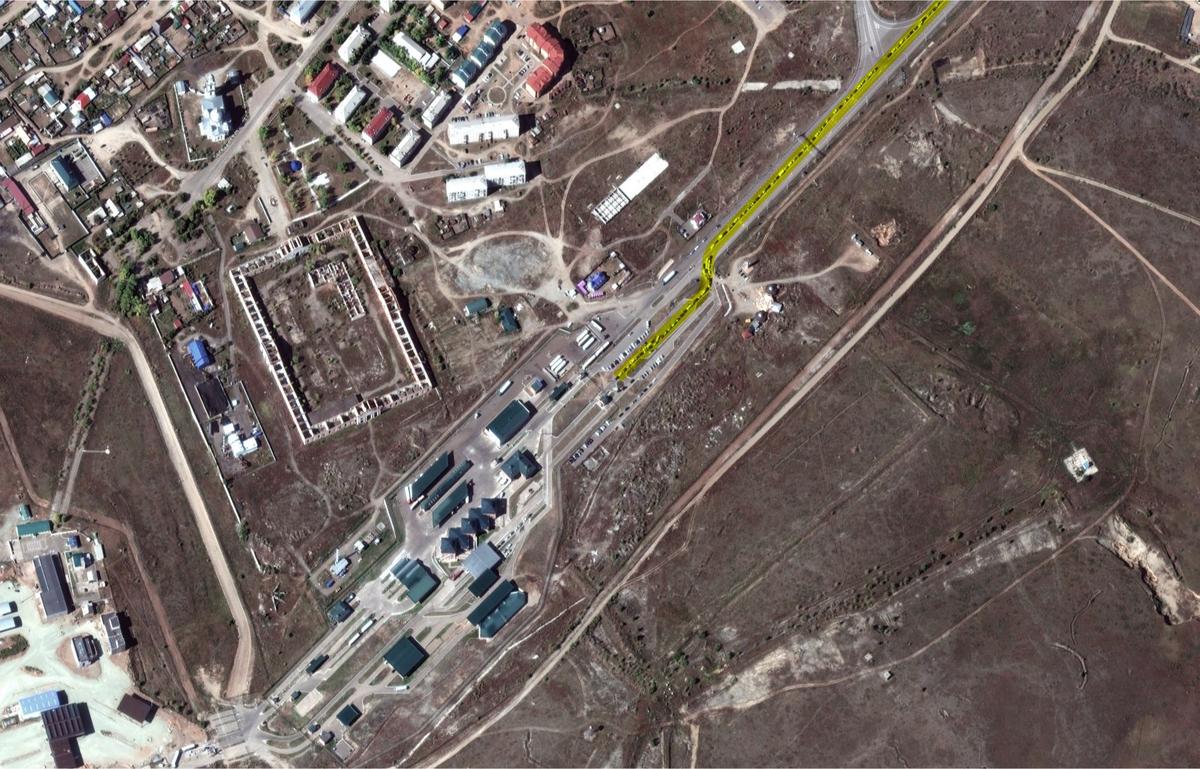
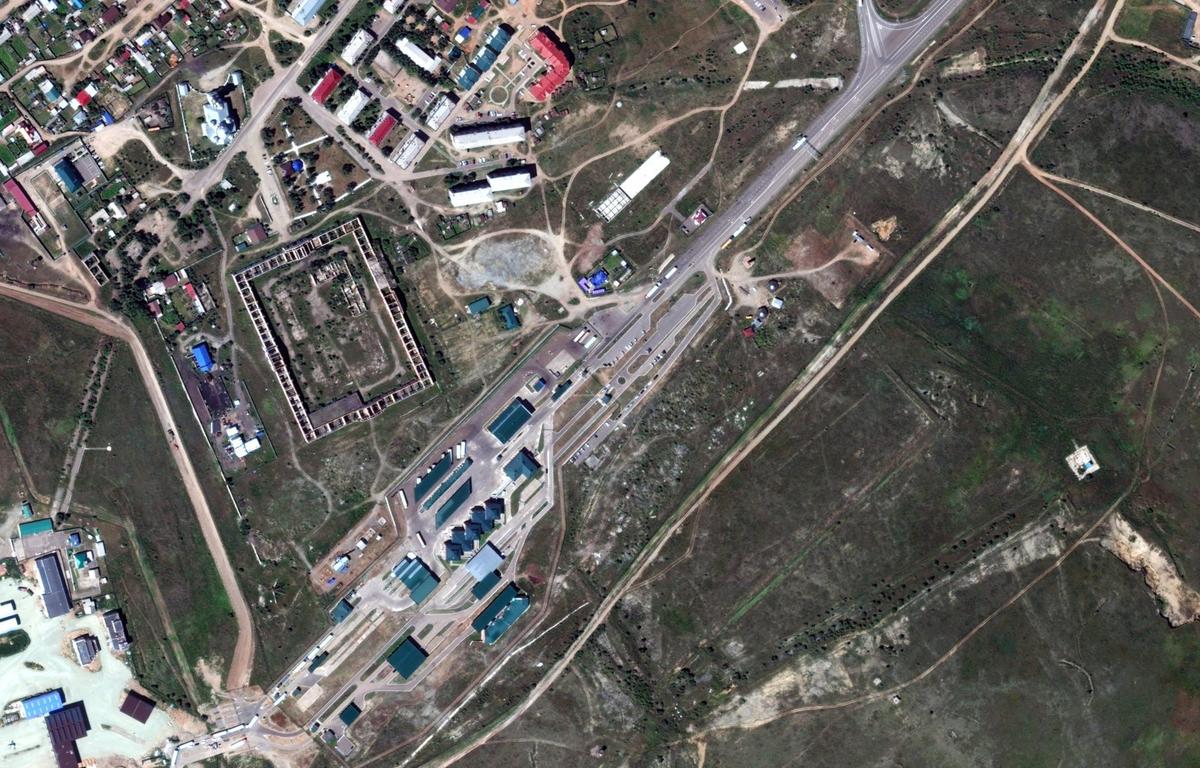
The border with Mongolia in Kyakhta, Buryatia, on 15 and 23 September
Source: Maxar
The busiest border checkpoints on the border with Mongolia 🇲🇳
The number of cars that crossed the border and that were queueing up near the checkpoint from 1 Sept until 29 Sept
The highest number of cars left Russia for Mongolia through the border checkpoint of Kyakhta in Buryatia: over 1,900 cars in 9 days. Traffic jams of up to 125 cars were reported near the border. According to the estimations of reporters and volunteers, Buryatia is a Russian region with one of the highest numbers of nationals lost in the Ukraine War. On 21 September, mass mobilisation was launched in the region: men eligible for mobilisation were visited by military commissars even during the night.
Nearly 3,100 cars left Russia for Mongolia from 21 to 29 September.
Mind the closing borders
The borders are gradually closing for men eligible for mobilisation, even though there has not been an official travel ban yet. On Sunday, 25 September, first reports of men being turned away at the border started trickling in. The border officials refused to let some men through, citing the mobilisation order. The guards are now consulting the lists provided to them by regional draft offices to decide whether to let someone through or not.
Mobile draft offices have been set up near the busiest border checkpoints that hand out call-up papers to the men turned away at the border.
A draft office was opened at 8:00 AM on 27 September near the Verkhny Lars checkpoint on the border with Georgia. On the same day, another office was set up in Torfyanovka on the border with Finland. Those eligible for partial mobilisation are being turned away at the border and immediately handed call-up papers, 47news outlet reports. Another draft board may be set up soon at the Karaozek checkpoint on the border with Kazakhstan.
Moreover, Russia’s regions with increased border traffic have started to indefinitely restrict entry to passenger vehicles from other regions. North Ossetia and the Astrakhan region have already introduced these measures. Meanwhile, from 29 September on, the Verkhny Lars checkpoint on the Russian-Georgian border has forbidden entry to people crossing the border on foot, on scooters, and on bikes.
Join us in rebuilding Novaya Gazeta Europe
The Russian government has banned independent media. We were forced to leave our country in order to keep doing our job, telling our readers about what is going on Russia, Ukraine and Europe.
We will continue fighting against warfare and dictatorship. We believe that freedom of speech is the most efficient antidote against tyranny. Support us financially to help us fight for peace and freedom.
By clicking the Support button, you agree to the processing of your personal data.
To cancel a regular donation, please write to [email protected]
